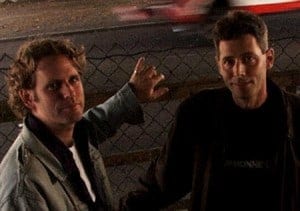 Medical anthropologist Philippe Bourgois and photographer and graduate student Jeff Schonberg spent 12 years among homeless heroin users on the streets of San Francisco, embedded in a world that is usually invisible to outsiders. This world exists at the seams of the city, under freeways, in vacant lots and alleys, largely unseen by passersby.
Medical anthropologist Philippe Bourgois and photographer and graduate student Jeff Schonberg spent 12 years among homeless heroin users on the streets of San Francisco, embedded in a world that is usually invisible to outsiders. This world exists at the seams of the city, under freeways, in vacant lots and alleys, largely unseen by passersby.
In their book Righteous Dopefiend, Bourgois and Schonberg document the inner workings of this community, in which heroin functions as part of a moral economy, governing relationships, social structure, dignity, and survival. Using photo-ethnography, they bring the lives and suffering of the people they befriended into view, without judgment or spectacle, and reveal how this marginalized group fits into the larger structure of American society. In this interview with KPFA’s Against the Grain, they discuss how in this community and others in the backstreets of major cities, vast structural forces converge on vulnerable individuals.
Bourgois and Schonberg use photo-ethnography to represent this group, but no image is complete without asking the right questions: “What are we imposing? What are we missing? What are the stakes of exposure to a wider audience?”, they write in the book. Above all, they continue, “there is urgency to documenting the lives of the Edgewater homeless. They survive in perpetual crisis. Their everyday physical and psychic pain should not be allowed to remain invisible.”
View an audio slideshow of Schonberg’s photographs, narrated by Bourgois, at the University of Pennsylvania School of Arts and Sciences. An exhibition of their work, “Righteous Dopefiend: Homelessness, Addiction and Poverty in Urban America”, is on display at the Penn Museum until May 2, 2011.
Listen to the KPFA Against the Grain interview with Schonberg and Bourgois.

